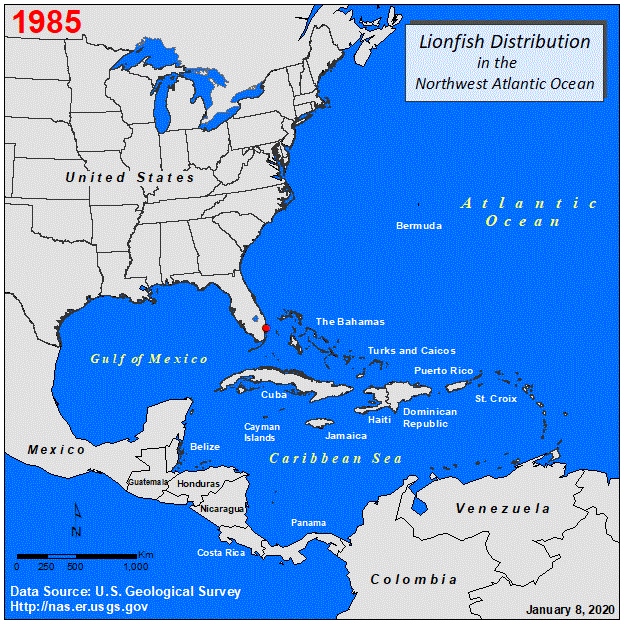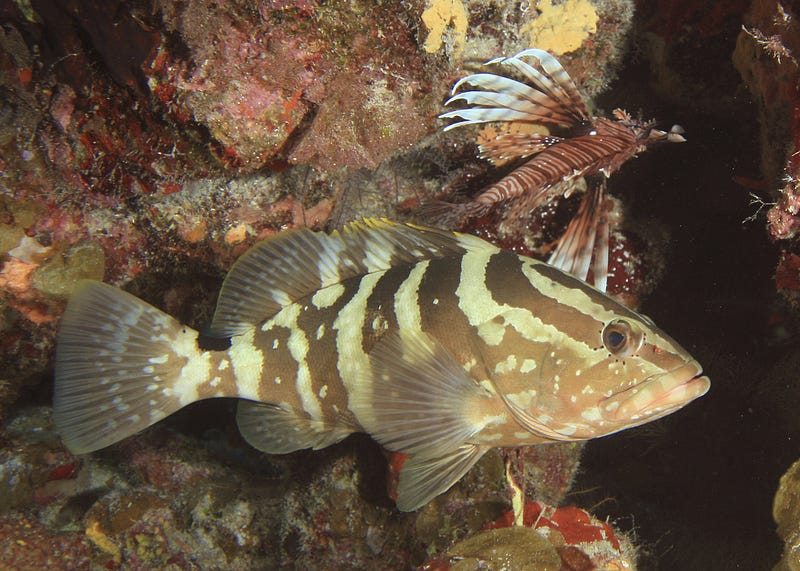Understanding the Impact of Invasive Lionfish on Marine Ecosystems
Written on
Chapter 1: Introduction to Invasive Species
In discussions about biodiversity, the focus often lies on conserving species. This is critical, especially as many species face extinction. However, preserving biodiversity sometimes necessitates the removal of certain non-native species from specific habitats. For instance, the removal of sea urchins in kelp forests has been detailed in my previous piece, “How Kelp Restoration Projects Impact Biodiversity.”
An excellent example of a species needing removal is the lionfish, which has invaded the Caribbean Sea. Originally from the Indian and Pacific Oceans and the Persian Gulf, lionfish were first documented in the western Atlantic Ocean in 1985 near Florida. Over the following years, sightings spread along the east coast of North America and into Atlantic islands such as Bermuda, the Bahamas, and the Turks and Caicos Islands in the early 2000s. By 2008, they had established themselves throughout the Caribbean, reaching countries like Jamaica, Haiti, and the Dominican Republic, as well as Central America.

The rapid expansion of the lionfish population can be attributed to several factors:
- Long-distance Travel: Lionfish can traverse considerable distances, easily crossing barriers like sandy expanses that hinder other fish species.
- Predatory Advantage: Many native species do not recognize lionfish as threats, allowing them to prey on a wide variety of marine animals. Their large mouths can expand significantly, enabling them to consume larger prey, and they can survive for up to ten weeks without food.
- Rapid Growth and Reproduction: Lionfish can reach lengths of 45 cm (17.7 inches) and have a lifespan of up to ten years. They mature quickly, breeding year-round and producing between 1,800 to 42,000 eggs per cycle.
With their swift proliferation in the Caribbean, lionfish pose a significant threat to marine ecosystems. Below are the primary ways in which they impact their environment and human activities:
Chapter 2: The Ecological Impact of Lionfish
Section 2.1: Competition for Resources
One of the main ways lionfish affect their surroundings is through competition for resources such as food and habitat. By occupying the same environments and consuming similar prey as native species, lionfish reduce the availability of these resources.
This competition can disrupt the behavior, growth, and even survival of native marine species. Additionally, as lionfish grow rapidly and consume prey at a quicker rate, the populations of native fish decrease, further exacerbating the issue.

Section 2.2: Predation Effects
Lionfish also significantly impact their environment through predation. They consume various marine life indiscriminately, including large herbivores and crustaceans like shrimp and crabs. Smaller lionfish tend to eat crustaceans, while larger ones prefer fish, especially juveniles, which are easier to catch. Their hunting strategy involves cornering prey against obstacles and using fast jets of water to disorient them.
This aggressive behavior can lead to local extinctions of native species, disrupting food chains and altering the entire ecosystem. The following video illustrates a lionfish hunting its prey:
Section 2.3: Economic Implications
Lionfish also influence human activities, particularly fishing in the Caribbean. By preying on commercially important species like snapper and grouper, they diminish their populations and the variety of fish available for commercial fisheries. This decline threatens the livelihoods of those reliant on fishing.
To address this issue, various measures have been implemented to manage lionfish populations, including capturing them through scientific expeditions and fishing tournaments. These efforts not only help reduce lionfish numbers but also raise awareness about the invasive species.
Conclusion: Addressing the Invasive Lionfish Challenge
In conclusion, invasive species like the lionfish disrupt ecosystems by competing for resources and preying on native species, ultimately affecting human fishing activities.
Taking Action Against Lionfish
Here are some practical steps we can take to mitigate the lionfish population:
- Try lionfish as a meal; it’s not only delicious but also aids in reducing their numbers.
- Participate in lionfish tournaments.
- Support fishing cooperatives that manage invasive species.
- Raise awareness about the dangers of invasive species among friends and family.
Which of these actions can you incorporate into your routine? Do you have additional suggestions for combating this issue? Share your thoughts in the comments!
If you found this article insightful, consider exploring my book “A Guide to A Healthier Planet,” which delves deeper into pressing environmental challenges.
A Guide to a Healthier Planet
This book focuses on bridging the gap between scientific insights and actionable strategies for a sustainable future.
About the Author
Dr. Erlijn van Genuchten is a recognized expert in environmental sustainability, dedicated to enhancing the communication of scientific findings to promote a sustainable future. She has inspired many through her collaborations with the United Nations, her book published by Springer Nature, and her engaging YouTube channel, Xplore Nature.
Reference
This article is based on:
Del Río, L., Navarro-Martínez, Z. M., Cobián-Rojas, D., Chevalier-Monteagudo, P. P., Angulo-Valdes, J. A., & Rodriguez-Viera, L. (2023). Biology and ecology of the lionfish Pterois volitans/Pterois miles as invasive alien species: a review. PeerJ, 11, e15728.